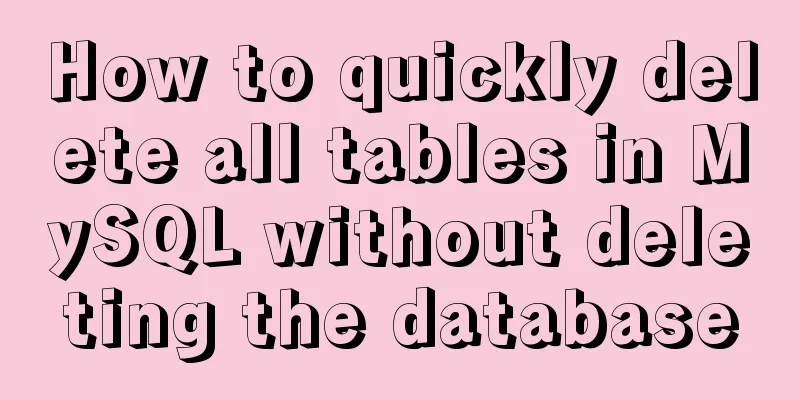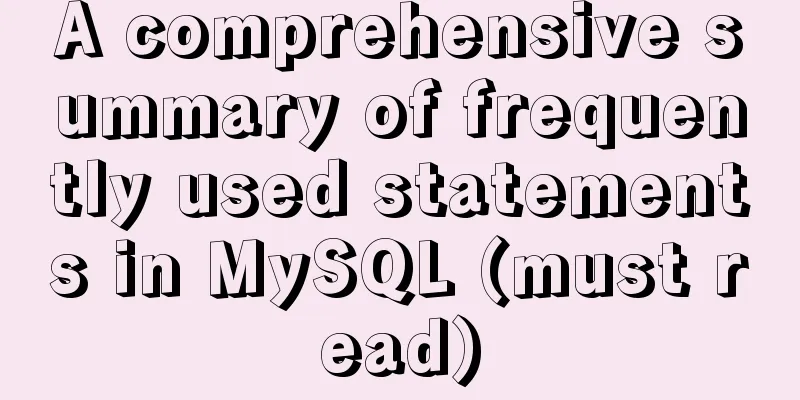Solution to forgetting the root password of self-built MySQL in Alibaba Cloud Linux CentOS 7.2

|
Verification environment: [root@~~/]# rpm -qa | grep mysql mysql-5.6.28-1.el6.x86_64 [root@~~/]# lsb_release -a LSB Version: :core-4.1-amd64:core-4.1-noarch Distributor ID: CentOS Description: CentOS Linux release 7.2.1511 (Core) Release: 7.2.1511 Codename: Core [root@~~/]# uname -r 3.10.0-327.22.2.el7.x86_64 First, make sure that the server is in a secure state, that is, no one can connect to the MySQL database at will. Because during the period of resetting the MySQL root password, the MySQL database is completely in a state without password protection, other users can also log in and modify MySQL information at will. You can achieve a quasi-safe state for the server by closing the external port of MySQL and stopping Apache and all user processes. The safest state is to operate on the server console and unplug the network cable. Modify MySQL login settings: Add a sentence in the [mysqld] section: skip-grant-tables [root@~~/]# vi /etc/my.cnf For example: [mysqld] datadir=/var/lib/mysql socket=/var/lib/mysql/mysql.sock skip-grant-tables Save and exit vi. Restart mysqld [root@~~/]# /etc/init.d/mysqld restart Stopping MySQL: [ OK ] Starting MySQL: [ OK ] Log in and change the MySQL root password
[root@~~/]#mysql
Welcome to the MySQL monitor. Commands end with ; or \g.
Your MySQL connection id is 1
Server version: 5.6.28-log Source distribution
Copyright (c) 2000, 2015, Oracle and/or its affiliates. All rights reserved.
Oracle is a registered trademark of Oracle Corporation and/or its
affiliates. Other names may be trademarks of their respective
owners.
Type 'help;' or '\h' for help. Type '\c' to clear the current input statement.
mysql> use mysql;
mysql> update user set password=password("test") where user='root';
mysql> flush privileges;
mysql> exit;
ByeChange the MySQL login settings back Delete the skip-grant-tables just added to the [mysqld] section, save the file and exit vi; [root@~~/]# vi /etc/my.cnf Save and exit vi. Restart mysqld again [root@~~/]# /etc/init.d/mysqld restart Stopping MySQL: [ OK ] Starting MySQL: [ OK ] Log in with the new password, log in normally If the database cannot be accessed from the external network, you can do the following: [root@~~/]# firewall-cmd --permanent --zone=public --add-port=3306/tcp success [root@~~/]# firewall-cmd --reload success The above is the solution to the problem of forgetting the root password of self-built MySQL under Alibaba Cloud Linux CentOS 7.2 introduced by the editor. I hope it will be helpful to everyone. If you have any questions, please leave me a message and the editor will reply to you in time. I would also like to thank everyone for their support of the 123WORDPRESS.COM website! You may also be interested in:
|
<<: Solution to the inconsistency between crontab execution time and system time
>>: Detailed explanation of 6 ways of js inheritance
Recommend
CSS achieves the effect of hiding the scroll bar and scrolling the content (three ways)
We often encounter this situation in front-end de...
Analysis and solution of flex layout collapse caused by Chrome 73
Phenomenon There are several nested flex structur...
Use @font-face to implement special characters on web pages (create custom fonts)
A few days ago, I wrote an article about using CS...
TypeScript namespace explanation
Table of contents 1. Definition and Use 1.1 Defin...
JavaScript to display hidden form text
This article shares the specific code of JavaScri...
Let's talk about MySQL joint query in detail
Table of contents Union query 1. Query the ID and...
The English reading of various special symbols on the keyboard (knowledge popularization)
Keyboard Characters English ` backquote ~ tilde !...
How to center the entire page content so that the height can adapt to the content and automatically expand
How to center the entire page content and how to m...
CSS modular solution
There are probably as many modular solutions for ...
Steps to install MySQL on Windows using a compressed archive file
Recently, I need to do a small verification exper...
How to install MySQL 5.7.29 with one click using shell script
This article refers to the work of 51CTO blog aut...
Five solutions to cross-browser problems (summary)
Brief review: Browser compatibility issues are of...
Detailed explanation of the solution to the Baidu https authentication prompt "Please redirect your http site 301 to the https site"
I recently wanted to convert a website to https a...
CSS to achieve Cyberpunk 2077 style visual effects in a few steps
background Before starting the article, let’s bri...
How to implement scheduled backup of CentOS MySQL database
The following script is used for scheduled backup...









